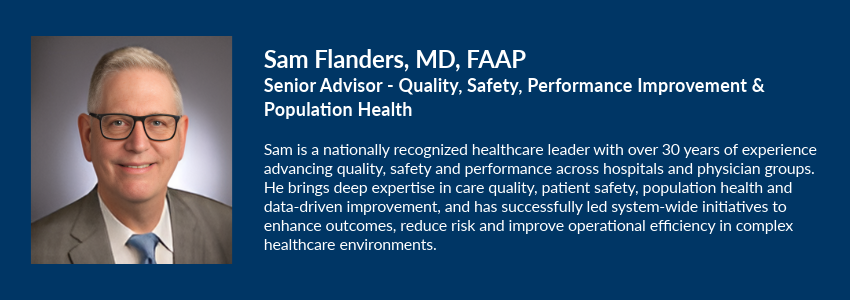
Kada Health News & Insights
BROWSE BY CATEGORY
As a Chief Quality Officer at a major healthcare system, I’ve gotten to participate in problem-solving across many areas of the hospital, clinics and ancillary areas. Some of the problems were related to quality and safety, while others were around efficiency and cost.
I often think about how we could do even better. Here are 3 traps that even the most well-meaning healthcare leaders can fall into, along with advice on how we could take a better approach.
Trap #1: Letting “best” get in the way of “better”
As healthcare professionals, we rightfully want to be perfect in everything that we do. This is absolutely necessary for some things, but it can also prevent progress when applied to others.
For example, if you wanted to reduce a 30% no-show rate in an outpatient clinic, would you consider it progress to get to 20%? Or only if you could get to 0%?
I’ve often seen groups debate vigorously about trying out ideas for improvement only to be talked out of them in the name of perfection. I feel that any progress in the right direction is good, so we should encourage people to try ideas (especially small, quick ones – “kaizens”) that generate some progress in the right direction. For most things, we shouldn’t let best get in the way of better.
Trap #2: Believing that education, policies and reminders to be more careful can improve safety and quality
When people aren’t following a procedure, I sometimes hear the suggestion that we just need to “educate” them to improve their compliance. Sometimes we turn to online policies or send memos to remind folks what to do.
But how effective are these tactics?
Think about your car for a moment. In modern cars, if you accidently leave your lights on or forget to take your key, an alarm sounds to remind you. When I first started driving (a fair amount of years ago, mind you), there were no alarms, but only warnings written in the owners’ manual.
Which do you think is more effective? How many of you read and remember what’s in your owner’s manual?
In modern operating rooms, the source for oxygen (and other gases) will only fit the correct connector. Years ago, patients were harmed because these connections were all the same size and shape and they could be easily confused. This is an example of a policy with concrete actions trumping reminders and education.
Although well-meaning, the truth is that education, policies and reminders rank, not surprisingly, very low in effectiveness. I’d like to challenge all of us to think about how we can aim higher. How can we design our processes to be less error-prone? How can we integrate the goal behind the education or policy more effectively into daily clinical practice?
In this way, safety can become not just advice, but a key part of the work itself.
Trap #3: Believing that I could never make the mistake someone else made
This is the toughest one because it can go against our training and professional pride.
Many of us (especially physicians) were brought up to believe that if we studied hard, were always careful and exercised our skills, that we would be perfect and never make a mistake.
In 1997, at an Indiana hospital where I was in charge of quality, a horrible tragedy occurred. Vials of 10,000 unit/ml heparin were mistakenly placed in the medication dispensing machine where 10 unit/ml heparin belonged. These vials looked almost identical, and 3 very experienced nurses used them on 6 babies, 3 of whom died.
Afterwards, as we were trying to console the nurses who were involved, a few of their colleagues felt they should be punished for making this mistake. They felt the NICU nurses should have been more careful … and that THEY surely would never make a mistake like this.
But the fact is that human error is impossible to prevent.
We have to design our systems to ensure safety rather than relying on perfect performance by our people. If we feel otherwise and believe that we can be perfect, it interferes with our ability to look for solutions that can reduce errors for everyone (things like, for example, bar code medication administration).
Addressing the Root Cause
These are a few things from my list that can slow down our progress to becoming safer, higher quality and more efficient. But there are surely plenty more out there.
What are your thoughts? Anything you would add to the list? What can we do to overcome these obstacles? Reach out and let’s start the conversation.
The Kada Health Operating System creates a culture of continuous improvement that is effective, rapid, and turns clinicians, front-line staff and administrators alike into problem-solvers, something that shouldn’t be exclusive to executive leaders.
Please reach out to us if you have questions or are interested in exploring what Kada Health can do for your organization.
About the Author





